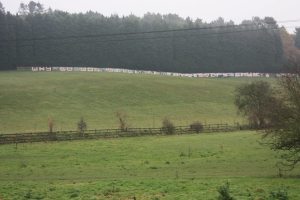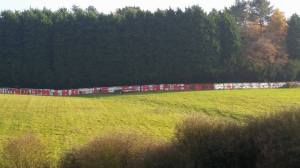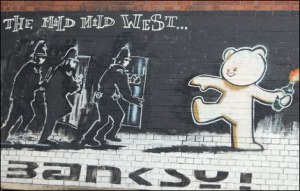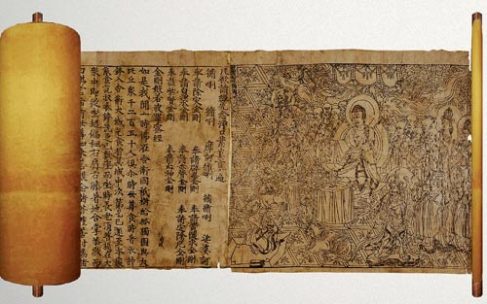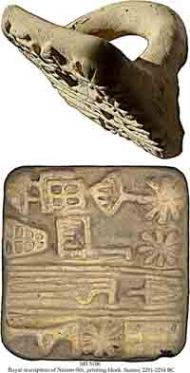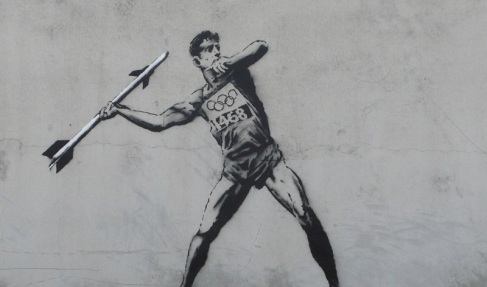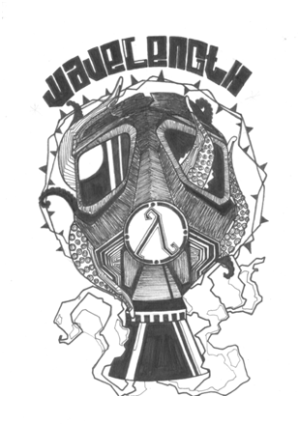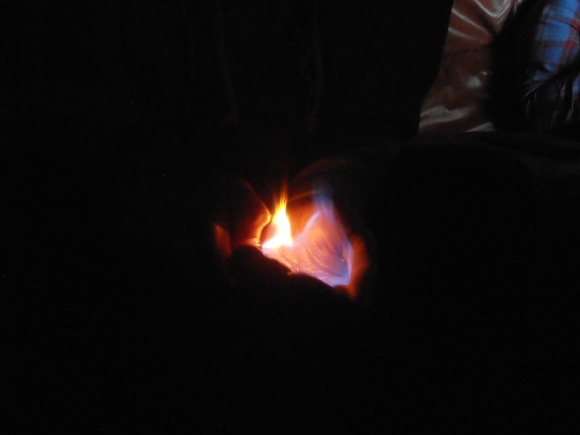We are faced by the mixture of text and image throughout our daily lives, whether it be on a billboard, on television or in a magazine, it is used in all elements of design. Why ? The addition of text helps emphasise a point that the designer may be trying to make, it helps to develop our understanding of something that might be quite difficult to communicate from the designers point of view. That being said, the addition of text can be used to inform the viewer on an issue that may concern their own lives. It is used to help target a specific audience and better their understanding of the subject at hand.
So why is it important ? From a companies point of view, an informative advert helps to attract customers, whether it be a select group of individuals or a community at large, they will always find innovative ways to sell you their product. Why ? The prime objective for a company is to sell you their product, once they grab your attention and inform you with all the wonderful things that they have to offer they are more likely to make some sort of profit. That being said it is not just companies that use text and image to help further their investments. Text and image can be used to express certain opinions or encapsulate the viewers imaginations. From an artists perspective, text and image go hand in hand, it helps further the point that they wish to communicate.
So in what way can an artist capture someones attention via the use of text and image ?
Well there’s one artist that does this very efficiently, through the use of stencil art, Banksy makes bold and visual statements through the use of his signature style to capture the viewers attention. The reason I chose Banksy was due to the fact that he is very imaginative and expressive when it comes to communicating his message. Using visual puns to grab the viewers attention and in some cases, cult images that the viewer can relate to, Banksy delivers a largely political message throughout his work. He’s the type to take risks, making bold statements which alternate from his views on the current economic climate to jokes based around popular culture.
Through the use of juxtaposing images against the text he uses or even sometimes the image itself, he projects a message that grabs the viewers attention. The use of ‘visual puns’ is very effective in my opinion, he presents the underlying message in the form of a joke that makes the viewer laugh at first but the think deeper into the subject that he’s talking about. By also relating his work to popular culture or the current structure of society, he uniquely gives the viewer something to laugh about whilst reflecting on the deep undertones of the underlying message. The only problem with this however is that his work becomes like the punchline of a joke, funny and interesting at first but the second time round it loses it’s appeal. I personally feel after viewing a piece of his work for the first time, i lose interest and want to see more, which in some ways is good for his publicity as he leaves the viewer eager to see more but it also adds an almost ‘superficial’ aspect to his work.
Never the less, Banksy is very unique at what he does; attempts to replicate his style of work only leads to failure in some aspects as people understand that the manner in which he presents his work is unique to Banksy and only Banksy. His outspoken yet anonymous image has given him world wide success and by intruding into popular culture he’s managed to cleverly wrap the ugly truth in a bright red bow.
Any design process can be broken down into a five stage process.
1. The problem (the client, user, participant)
2. Ideas (definition of problem, thoughts, research and facts)
3. Visualisation (sketches, drawings, observations)
4. Layouts (organisation and presentation of solution)
5. Production (how to make your solution work in practice)
I am going to focus on two key principles here; A brief history of production and Essential milestones.
The earliest traceable form of printing dates back to ancient China, where characters were carved onto blocks of wood in reverse relief. The woodblock was then inked, making it able to produce multiple copies on sheets of paper. This technique was eventually applied to books. Movable type was also created in ancient China but only proved successful in Europe during the 15th century.
The Diamond Sutra, a copy of a Sanskrit and translated into Chinese was printed by Wang Jie in May 868. Although woodblock printing had already been used in China for over 150 years, the Diamond Sutra is the earliest printed book to bear an actual date. The document is more than five meters long and consists of seven strips of paper pasted together. It is now owned, ironically, by the British Library and can been viewed online.
In fact, some of the earliest forms of block printing dates back to around 2000BC and may continue further. The Royal Inscription of Naram-Sin, is the earliest known evidence of printing. Naram Sin, who built the Temple of Ishtar, was the first king to use blocks for printing bricks. Prior to him, inscriptions on bricks were written in hand. There are three brick stamps which are stored at the Oriental Institute of University of Chicago, the Kalamazoo Library and a tiny fragment in the British Museum. These 3 brick stamps with known bricks are the earliest evidence of printing, which, in this case, was pressed onto soft clay.
Until the end of the 18th century, the only way to combine print type and illustrations was by using the same woodcuts. These may have history to them but lack the capacity for fine detail, which can be seen in the 1456 visit of Halley’s Comet from Conrad Lycosthenes. 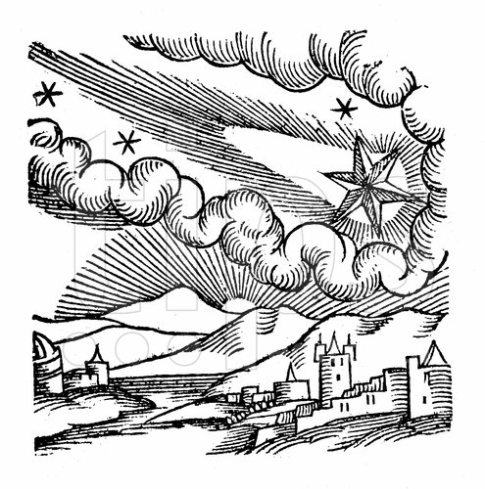
Due to etching being an itaglio process, illustrations had to be printed separately from the text. They were then “tipped in” when the book was bound.
Modern day printing and typography
Erik Spiekermann
Interpretation
Q: How can illustrators, designers, photographers, film makers, etc. amplify the communication and meaning or a piece of work/design?
A: Illustrators select, respond and use the “zeitgeist” of their time to imprint meaning, messages, content and engagement.
Zeitgeist: the ‘spirit of the age or spirit of the time’ is the intellectual fashion or dominant school of thought which amplifies and influences the culture of a period.
One artist that incorperates these ideas into his work is a street artist who goes by the name of Banksy.
What Banksy communicates through his work, in my opinion, are largely political and social puns based on our life in modern society. The underlying message is visually communicated through the visual pun that stops and makes people think for a second. I have always attributed Banksy’s work to the punchline of a joke. It’s funny when you hear it the first time round but the second time just isn’t the same. I find this to be true, the first time I look at a new piece of his work it, the concept stays in my mind for a few seconds, before I want to move on and see more.
I feel that analysing and understanding the concepts behind an artists work, helps us understand their point of view and allows us to relate their thought processes to our own work.
Delivery
Q:What are the platforms that illustrators, designers, photographers, etc. use to deliver their communication and how does this effect the work ?
A: By choosing from a pyramid of platforms, you can select appropriate formats and thereby create a context for their work, to heighten their message.
Platforms to heighten your profile
- Editorial (magazines, journals, newspapers)
- Publishing (printed media, books, posters etc)
- Online (animation)
- Advertising and Branding
- Textiles/Fashion (patterns for fabric, wallpapers, fashion)
- Installation and Interventions
By pursuing different subjects and topics as a creative, it gives you the background experience you need to grow as an artist, improve your own skills and raise your profile.
When developing a narrative, whether it be for a film, story or animation, it is up to the artist to engage his audience into the realms of his imagination and walk them through his thought process. The artist should allow his audience to visually experience the story.
In the scripts of books and films, writers engage their audience by creating two extremes. The first, and most obvious role is The Hero. “The Hero” is portrayed as an ordinary, but typically very good looking person, that’s used as a symbol of hope for the viewer to relate with, he/she is normally seen as the person who is fearless and brave enough to overcome extraordinary obstacles.
The second extreme is The Villain. The villain is portrayed as the outcast, a person that could never fit into society and does everything in his power to destroy it. The idea of creating an “enemy image” for the audience to despise is a well known philosophical concept, explored by philosopher Carl Schmitt in his book, “The concept of the political”.
The next stage in engaging the audience is through the use of Emotion.
Emotion is an automatic value response that is given for the audience to empathise with, creating a happy or sad scenario has an effect on the viewers emotion towards the subject. Maintaining the viewers interest is a key aspect of this process and is exploited heavily by many writers.
Other aspects include Adrenaline Moments. Adrenaline moments are experienced by the character and engage the audience through the use of emotion, ie. a happy moment full of excitement or a sad and reflective moment, both allow the audience to relate and empathise with the character.
The final stage focuses on Action.
The main character, usually the hero, should have a clear objective throughout the story. The character should incorporate action with the pursuit of the objective and steadily overcome the main obstacle in the storyline.
The story line. The story line is told in a form of casually linked set of events that explore a connected series of events, either true or ficitious. It is depicted as a journey that is normally related to our lives to create a deeper connection with the viewer.
The story line is created from either :
- An account (a report or description)
- A tale (something told, relation of events)
- Chronicles (historical records or registered facts)
- History (a known or recorded past)
- News (new information)
- Report (given information)
- Anecdote (personal/biographical event or encounter)
- Hearsay (something one has heard but has no credibility)
- Gossip (idle talk, private affairs)
- Joke (something said to arouse laughter)
- Fable (simple story from a moral)
- Myth (a traditional story of unknown authorship)
- Legend (a story handed down for generations among people believed to have historical bases but not verifiable)
Pointers when developing stories
- Journey
- Experiences
- Observation
- Documentary
- Abstraction
- Metaphoical
Communication is the final pointer when developing a story line. You have to ask your self, “Who is it for ?” “What is your intention?” “How do you plan on conveying your message?”
All these points should be considered when developing your narrative and story line.
Created a Behance account a few days ago which includes some of my previous work.
Recently I started work on a logo design for one of my friends who is also a dj called Wavelength. The illustration was all hand drawn with black fine liners.
After recently starting photography for three weeks, I decided to use what I have learnt and experiment with my camera, mainly with shutter speeds and exposure.
Some background information:
- The camera uses a film or sensor ship, the film or chip is sensitive to light, so getting the correct amount of light onto the chip will result in correct exposure.
- Too much light will result in overexposure, not enough light will result in underexposure.
- Shutter speed controls velocity of subject in a photograph
- Shutter speeds can either freeze fast motion by using a fast shutter speed or capture blurred movement by using a slow shutter speed.
- Aperture controls the depth of sharpness to an image. This is called depth of field.
- Extremely long or slow shutter speeds will trace the history of movement.
In the images below, I have focused on using different exposure and shutter speeds.
Five principles of this lecture
- Legibility
- Researching the content
- Researching the practice
- Tone of voice
- Visual hierarchy
Today I am going to focus on the importance of research and how our understanding of the subject at hand can help further develop our ideas and lead us to our final delivery. When receiving our brief there are 3 key stages that we go through before delivering the final product. They are:
- RESEARCH
- DEVELOPMENT
- PRODUCTION
Staying on the topic of research however, there are two key principles; Researching the practice, which may include graphic communication, illustration, photography etc AND Researching the content, which takes into consideration the subject/topic and the target audience.
Ways of researching and learning: Gathering data and researching the content, reflecting on the research, thinking and coming to a conclusion from the research and planning the next stage.
Everyone has a different way of researching data, it all starts off by listing the key points of information that we wish to look into. So in terms of researching a city, you would look for, names people use, landmarks, key routes, confusions, maps. All the data you collect helps to increase the credibility of your research.
Researching the content.
How do we find out about researching content for our brief ?
Researching the content consists of a cycle that involves DOING some research, REFLECTING on the research, THINKING and concluding from the research and PLANNING the next research. This is based off of Kolb’s Learning Cycle (Theory) which involves a similar cycle consisting of CONCRETE EXPERIENCE, REFLECTIVE OBSERVATION, ABSTRACT CONCEPTUALISATION, and ACTIVE EXPERIMENTATION.
It is said that a different types of designers prefer one part of this cycle, thus you have DESIGNER A, who is a ‘doing’ person, DESIGNER B, a reflective person, DESIGNER C, a thinker and DESIGNER D, a planner.
So what do we do when we research ?
Take map design for example, the researcher has to collate all forms of data. You have to think about, key routes, landmarks, local slang for the area, the style of the map and the way you wish to communicate the information. You have to constantly think about the information you wish to include, how it has been gathered, what format you wish to use and how big it is. Every factor that you can possible think of needs to be studied and applied to your work.
Critical commentary on researching content
Find examples of the visual communications for which content research has been necessary and explain how and why.
Researching the practice.
How do you find out about your chosen practice ?
To figure this out we have to get into the minds of a visual communicator and start to understand how they think. How do they decide what style/colour/typeface/media to use ? You have think about what has already been designed, why it was designed and how they did it. Most importantly, think about who inspires you, who’s style do you admire and why ?
Look out for visual data that could help improve your research, Listen, it gives you a sense of your surroundings and helps to add your own opinion to your research. Read, it expands your knowledge and gives you a better understanding of the area you are working in. Read magazines about the local city ! Gather as much data as you possibly can. Watch, observing with your own two eyes is one of the most important parts of your research, what you see is what you understand. Approach everything with an open mind. Experiment, based off what you have learnt it is important to put everything into practice. Experiment with the data that you have collected and show that you have an understanding of the subject. Explore, this opens up an infinite number of possibilities in terms of what you can achieve. Exploring is how you progress from one stage to the next.
What is the key to a reliable and creative process ? There are five key points:
- Research
- Practice
- Visual Vocabulary
- Inspiration
- Audience
Although they are all as important as each other, today I am going to focus on the two points that help me the most during my creative process, Research and Inspiration.
Research
“In the broadest sense of the word, the definition of research includes any gathering of data, information and facts for the advancement of knowledge.” – Martyn Shuttleworth
“Research is a process of steps used to collect and analyse information to increase our understanding of a topic or issue.” – John Creswell
The research process consists of three key steps:
- Posing a question
- Collecting data to answer the question
- Presenting an answer to the question
Research itself is an intrinsic aspect of design practice and an essential part of problem solving. It is an investigation that remains a fundamental part of any creative process. There are two forms of research; primary and secondary. In primary research, there is no data available for the research, this means that the researcher has to start from scratch. If you are doing secondary research, the researcher already has the necessary data available. This data or information may be gathered from organisations or publications. The most important point is that there are advantages and disadvantages to both methods.
Visual research is the practice of creating pictures, impressions, appearances, visualising, rendering, projections, illustrations, diagrams, images etc.
How do illustrators/visual communicators research ?
- By drawing, collecting, reading, surrounding themselves with things that inspire them.
- They should be involved in a constant process of enquiry.
Boredom is the enemy of the artist – Paul Davis
So we must ask ourselves, why is research important ?
Through the visual practice of observation, collecting, studying and exploring a subject, topic or theme, the more we can contribute to a deeper understanding of the subject.
Inspiration
Where do illustrators, designers, etc find inspiration ?
By collecting, collating, observation and drawing.
It is important as an artist to document everything that helps your ideas grow, these could be pictures, drawings, cut outs etc. As an artist, your ideas progress from previous ideas, it’s how you improve on your own work and skills. When collecting visual data it is important to show where you got it from and how it applies to your work. Also, experiment with your work, it shows an understanding of what you have learnt and how you applied it to your work.
“Sketching, thinking, reading…I feed as much information from various sources into my brain and let it filter down to one elegant solution…I hope.” Rian Hughes
Inspiration can be drawn from all aspects of our daily lives. It’s the way we view and perceive things that matters the most. By relating our understanding of various subjects, concepts and ideas to the ‘real world’ the more we begin to think about what is possible; and in the realms of your imagination, anything is.
